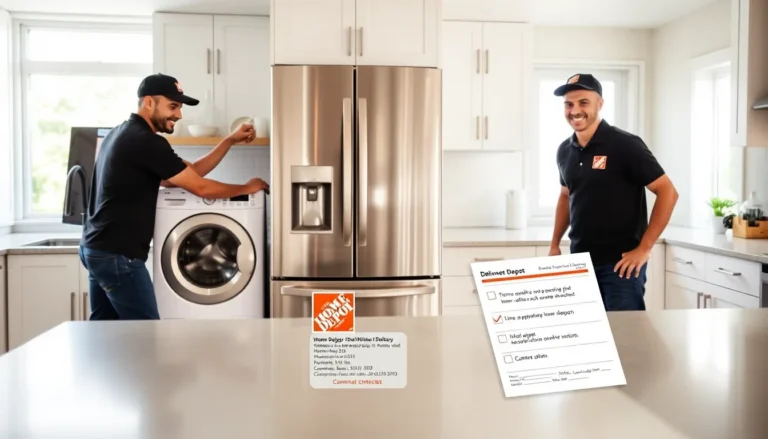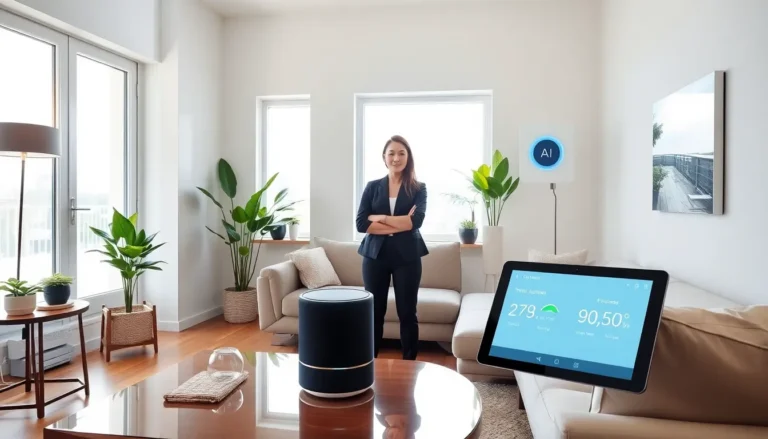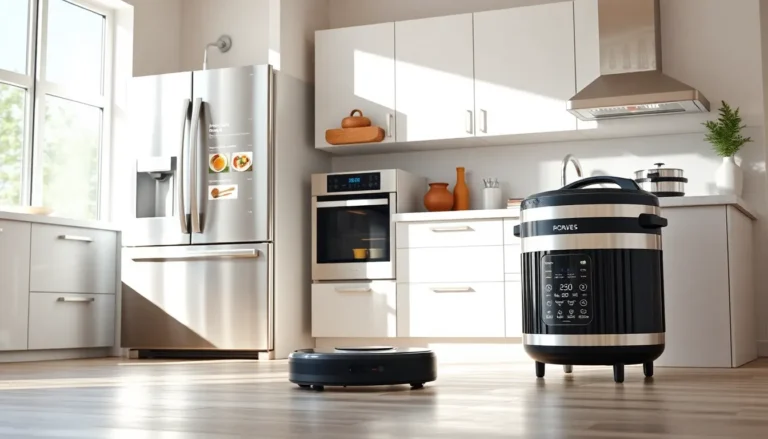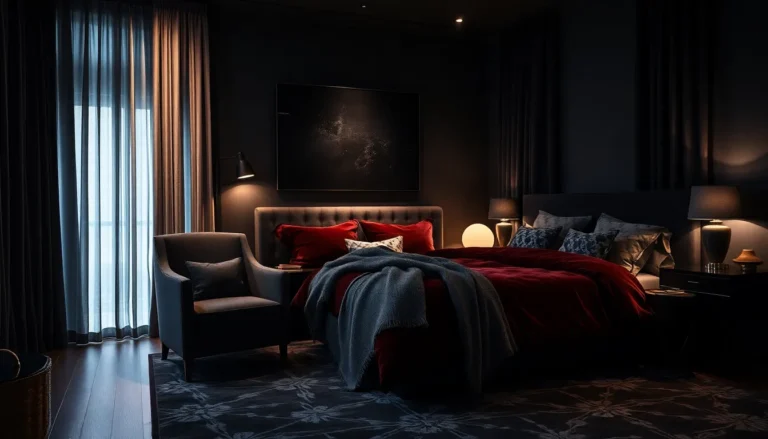Imagine a home that understands your habits, adjusts the temperature just right, and even reminds you to water the plants. Welcome to the world of modern smart homes, where the latest technology meets our everyday lives. It’s like living in a sci-fi movie, but without the flying cars and dubious robot overlords. From smart speakers to automated lighting, these homes are increasingly becoming a reality. Let’s jump into the facets of smart homes and discover how they’re transforming our living spaces.
Table of Contents
ToggleWhat Is a Smart Home?
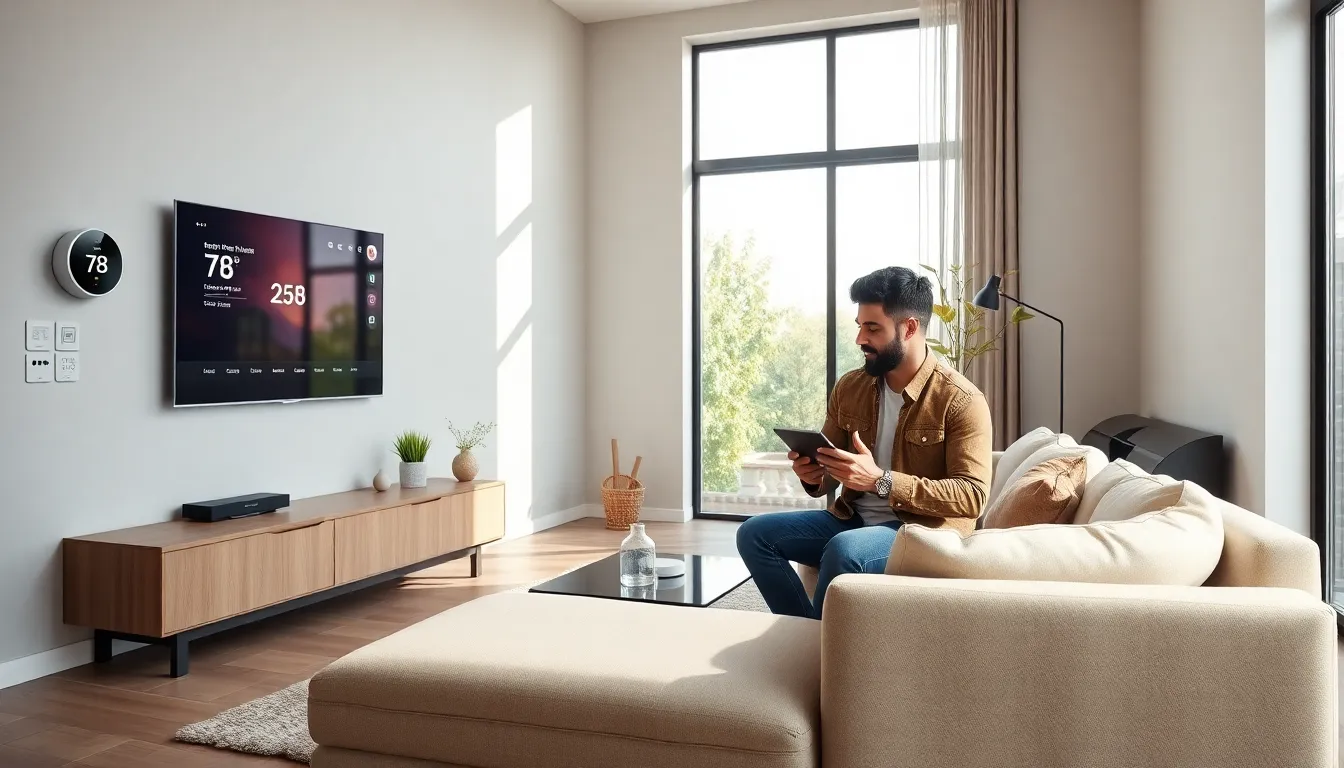
A smart home is a living space equipped with devices that can communicate with each other and be controlled remotely. Think of it as a seamless network of digital gadgets working together to improve your quality of life. The concept revolves around automation and connectivity, creating an ecosystem that simplifies daily tasks. This technology enables homeowners to manage everything from security systems to temperature settings using their smartphones or even voice commands.
Essentially, a smart home transforms regular house items into smart devices. For instance, a standard thermostat might be replaced with a smart one that learns your schedule and preferences. Suddenly, your everyday living becomes more efficient, and often, more enjoyable.
Key Features of Modern Smart Homes
Modern smart homes boast a suite of advanced features. Automation is at the frontlines, allowing schedules and routines for lights and appliances. With a few taps on a screen, the lights dim, the coffee brews, and the home welcomes you in.
Connectivity is another cornerstone. Devices connect via Wi-Fi, Bluetooth, or even Zigbee, creating a cohesive inter-device communication system. Imagine a light bulb that can talk to your thermostat, adjusting the temperature according to the natural light in the room.
Security features are also a major selling point. Smart cameras and doorbell systems allow homeowners to monitor their properties in real-time. Instant alerts can notify you if someone’s at your door or if they’re attempting unwanted entrance.
Finally, energy efficiency is a sought-after feature. Smart appliances help minimize energy waste, enabling homeowners to track energy usage in real time and make informed decisions to reduce costs.
The Benefits of Smart Home Technology
The benefits of adopting smart home technology are manifold. First and foremost is convenience. With devices that can be controlled remotely through apps, daily chores become a breeze. Imagine preheating your oven from the couch or turning off lights while cozying up in bed.
Also, smart homes can lead to significant cost savings. Energy-efficient devices can lower utility bills over time. Also, some insurance companies offer discounts for homes equipped with security systems. It pays to be smart.
Safety is enhanced as well. Smart alarms alert homeowners to potential dangers like smoke or carbon monoxide, sometimes even notifying emergency services.
Finally, there’s the factor of customizability. Owners can tailor their smart homes to fit their lifestyle perfectly. Whether it’s a voice assistant that plays your favorite tunes or smart curtains that open with the sunrise, personalization options are practically endless.
Popular Smart Home Devices
When it comes to devices that transform homes into smart havens, a few stand out:
- Smart Speakers: Devices like Amazon Echo and Google Nest Hub act as command centers for your smart home. With voice control, you can play music, check the weather, or control other smart devices.
- Smart Thermostats: Brands like Nest and Ecobee allow you to control heating and cooling, learning your preferences to save on energy.
- Smart Security Cameras: Devices from Ring and Arlo provide real-time video feeds accessible from mobile devices.
- Smart Lighting: Philips Hue and LIFX enable users to adjust brightness and colors remotely, creating moods and saving energy.
- Smart Locks: Keyless entry systems, such as August Smart Lock, enhance security while offering convenience.
Challenges and Considerations in Smart Housing
While the benefits are compelling, adopting smart home technology isn’t without its challenges. Cost can be a significant barrier, as quality smart devices often come with high price tags. Plus, the expense of installation may be daunting for some homeowners.
Compatibility among various devices can be another issue. Not all smart devices work seamlessly together. Homeowners must research compatibility to avoid a frustrating experience.
Security and privacy concerns also loom large. Hackers can exploit vulnerabilities in smart technologies, potentially leading to unauthorized access to homes or data breaches. Hence, choosing reputable brands and ensuring devices are regularly updated is crucial.
Finally, a simple understanding of technology can be the difference between a convenient upgrade and a headache. Many users may struggle to manage these increasingly complex systems.
The Future of Smart Homes
The future of smart homes looks promising, evolving rapidly as technology continues to advance. Innovations like AI and machine learning will make homes even smarter, adapting to individual needs seamlessly. Expect devices to anticipate behaviors rather than merely respond based on commands.
Also, integration with renewable energy sources like solar panels is likely to increase. Smart homes may effectively manage energy consumption and even sell surplus back to the grid, leading to even more sustainability.
The concept of the Internet of Things (IoT) will further enhance smart homes. As more devices connect, the ability to create a personalized living environment becomes not only feasible but expected.


